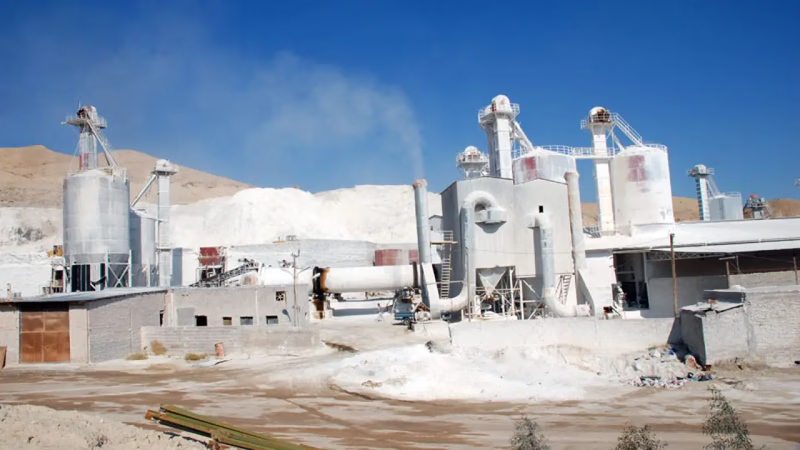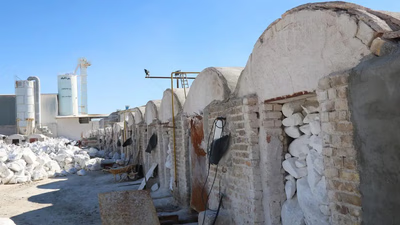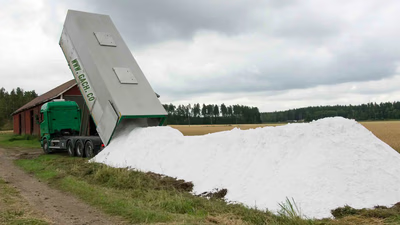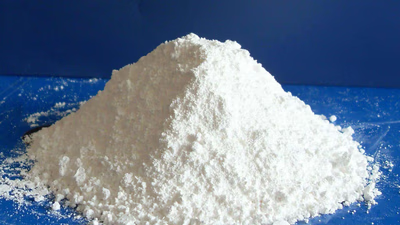
Plaster applications in construction: enhancing aesthetics and durability.
One of the primary uses of plaster and gypsum in construction is for interior wall and ceiling finishing. Gypsum plaster, commonly known as plaster of Paris, is mixed with water to create a paste that can be applied smoothly on walls and ceilings. It provides a smooth, even surface that is ready for painting or other decorative finishes. Plaster is widely used for creating decorative elements in buildings. Skilled craftsmen can use plaster to form intricate moldings, cornices, ceiling roses, and other ornamental details. These decorative plasterwork elements add aesthetic appeal and architectural character to interior spaces.
Plaster is commonly used in the repair and restoration of older buildings. Skilled craftsmen can use plaster to replicate and restore historic plasterwork and decorative elements. Plaster can be applied to damaged walls and ceilings to restore their original appearance. Gypsum-based products, such as gypsum boards, can contribute to soundproofing and acoustic control in buildings. Gypsum boards with specific compositions and thicknesses can help reduce sound transmission between rooms and provide better acoustic performance in spaces such as theaters, recording studios, or conference rooms.
The main consumption of plaster is in construction industry. Plaster is used in the building in two forms: clay plaster and whitewashing plaster. Composite plasters, like Gipton plaster, are used for plastering concrete surfaces. Applications of gypsum in the construction industry include: surface coating, whitewashing, cleaning, polishing, plastering, gypsum mortar, thermal and acoustic insulation, prefabricated roof and floor sheets, sculpture, drywall, decor, Gypsum tile and so on.
Lath is a material traditionally used as a base for plaster applications. Wooden lath or metal lath is fixed to the structural framework of a wall or ceiling before plastering. The lath provides a support surface for the plaster to adhere to and helps in achieving a solid and durable plaster finish. Gypsum board, commonly known as drywall or plasterboard, is a widely used building material in interior construction. Gypsum boards are made of a gypsum core sandwiched between paper facings. They are used as an alternative to traditional plaster applications. Gypsum boards provide a smooth and even surface that can be easily finished with paint or other decorative treatments.
Plaster is often applied to masonry surfaces, such as brick or concrete walls. The plaster forms a protective and decorative layer over the masonry, providing a smooth and visually appealing finish. Plaster can help in improving the appearance of masonry surfaces and can also contribute to their durability and weather resistance. Plaster surfaces are commonly painted or coated with various finishes to enhance their appearance and protect them from wear and tear. Once the plaster is applied and dried, it is typically primed and then painted with the desired color. Other coatings, such as textured finishes or wallpaper, can also be applied to plaster surfaces to achieve different aesthetic effects.
Plaster can be used in conjunction with insulation materials to improve thermal and acoustic performance. Insulation materials, such as fiberglass batts or rigid foam boards, can be installed within wall or ceiling cavities, and then plaster is applied as a finishing layer over them. This combination helps to provide both insulation and a smooth, finished surface. In modern construction, metal framework systems, such as steel studs or metal profiles, are commonly used for interior walls and ceilings. Plaster can be applied directly to these metal frameworks to create a finished surface. Metal framework systems offer strength and stability, and the plaster provides the desired aesthetic and functional properties.
Gypsum has inherent fire-resistant properties, making it valuable in the construction industry. Gypsum plaster and gypsum boards offer fire resistance and can help slow down the spread of flames in case of a fire. They are used in fire-rated walls, ceilings, and partitions to enhance building safety. Gypsum is also used in cement industry. One of the most important uses of gypsum is in Portland cement industries. In the cement industry, gypsum is used as a material to create more adhesion in cement. The use of gypsum in the cement industry is in the form of raw gypsum (pure gypsum extracted from the mine) with specific aggregate.
Gypsum-based plasterboard, often referred to as drywall, is a common building material used for interior walls and ceilings. It consists of a gypsum core sandwiched between paper facings. Drywall is lightweight, easy to install, and provides fire resistance and sound insulation properties. It is a versatile and cost-effective solution for partitioning interior spaces. Plaster and gypsum are used to create false ceilings, also known as suspended ceilings or drop ceilings. False ceilings are secondary ceilings installed below the main structural ceiling. They provide a space for concealing electrical wiring, HVAC systems, and providing acoustic insulation. Gypsum boards or plaster panels are often used to construct false ceilings due to their lightweight nature and ease of installation.
-

Plaster and gypsum play a crucial role in the construction industry, primarily for interior wall and ceiling finishing. Gypsum plaster, or plaster of Paris, is mixed with water to create a smooth paste that can be applied to surfaces, providing an even base for painting or decorative finishes. It is also used for creating intricate decorative elements like moldings and cornices, enhancing the aesthetic appeal of spaces. In restoration projects, plaster helps replicate historic designs and repair damaged surfaces. Gypsum boards, commonly known as drywall, are widely utilized as an alternative to traditional plaster applications due to their ease of installation and fire-resistant properties. They contribute to soundproofing and thermal insulation in various settings such as theaters and conference rooms. Plaster can be applied over masonry surfaces to improve durability and weather resistance while offering a visually appealing finish. Additionally, modern construction often employs metal frameworks for interior walls where plaster can be directly applied.
The versatility of gypsum extends beyond construction; it is also significant in the cement industry for enhancing adhesion. Overall, plaster"s multifaceted applications make it indispensable in both new constructions and renovations. "
-

Plaster is a versatile material with significant applications across various industries, particularly in construction, agriculture, and healthcare. In the construction sector, plaster is primarily used for interior finishing, decorative elements, and creating plasterboard panels. Its role extends to the medical field where Plaster of Paris is utilized for making casts and dental molds. In agriculture, gypsum plaster improves soil structure and fertility, enhancing drainage and nutrient uptake while reducing soil compaction. It also plays a crucial role in reclaiming sodic soils and providing essential nutrients like calcium and sulfur to crops. The historical use of plaster in agriculture dates back over 250 years, yet its potential remains underutilized in certain regions like pistachio gardens. Additionally, plaster finds applications in industrial settings such as metal casting and ceramics, where it is used to create molds for intricate designs. Artists also favor plaster for its workability in sculpture creation.
Overall, plaster"s multifaceted uses highlight its importance across diverse sectors. "
-

Gypsum is a versatile mineral with applications across various industries, including agriculture, construction, healthcare, and manufacturing. In agriculture, it serves as a soil amendment that enhances soil structure and nutrient availability by providing essential calcium and sulfur. The construction industry utilizes gypsum in cement production to control setting times and improve the durability of concrete products. Additionally, gypsum is integral in creating plaster molds for ceramics and metal casting, as well as in producing lightweight concrete blocks. In healthcare, gypsum is used for dental molds and medical bandages due to its purity requirements. The food industry benefits from gypsum"s role in sugar production and beverage clarification. Furthermore, gypsum finds applications in the glass industry to regulate melt viscosity and in the petrochemical sector as a drying agent. Its use extends to the paper and paint industries for transparency enhancement and as a filler material. Gypsum"s adaptability makes it an essential component across multiple sectors, highlighting its importance in trade within the Middle East and West Asia.
-

Gypsum and plaster have been utilized for thousands of years, with significant applications in ancient civilizations such as Egypt, Greece, and Rome. The Egyptians used gypsum plaster for tombs and temples, while the Greeks and Romans advanced its use in decorative elements and construction techniques. During the Middle Ages, plasterwork became prominent in Europe, especially in castles and churches. The Renaissance saw a peak in elaborate plaster decorations. Evidence of gypsum use dates back to 9000 years ago in regions like Anatolia and Syria, showcasing its historical significance across various cultures. In modern times, gypsum remains crucial in construction for its fire resistance and sound insulation properties. The Industrial Revolution enhanced gypsum production methods, leading to the widespread adoption of drywall or plasterboard. Today, gypsum products are integral to residential, commercial, and industrial applications.
-

Gypsum plaster, or plaster of Paris, is derived from the mineral gypsum, a soft sulfate mineral composed of calcium sulfate dihydrate. This material is created by heating gypsum to eliminate water content, resulting in a dry powder that rehydrates when mixed with water. It forms a durable paste suitable for application on walls and ceilings. Gypsum is widely available globally, with major production in countries like the United States, China, and Iran. Building supply stores typically stock gypsum products in various forms, including powder and pre-mixed bags. Gypsum plaster is favored in construction for its smooth finish and fire-resistant properties but should not be used in moisture-prone areas due to deterioration risks. Its unique rehydration ability allows for easy repairs and adjustments. Online retailers also offer gypsum products, making it accessible for various construction needs. For bulk purchases or direct sourcing, contacting local mining companies or suppliers can be beneficial.





